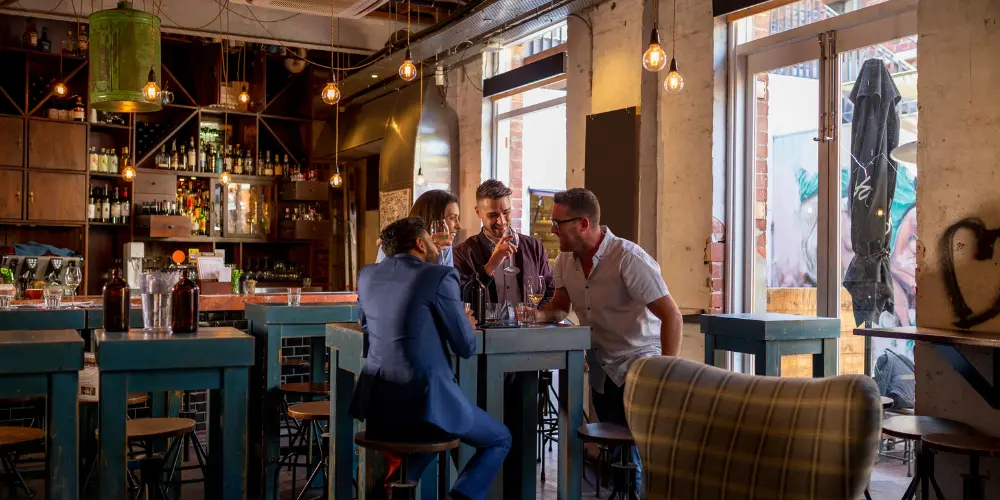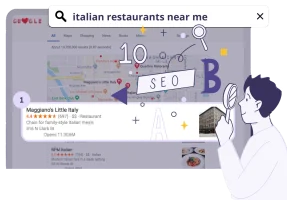The joy of welcoming new faces and quickly filling up the tables at your restaurant can quickly turn into a nightmare if your crowd management is not up to par. With long wait lines, hungry and impatient customers, and overwhelmed staff – it’s close to impossible to make a good impression and preserve your reputation.
Skillful crowd management, on the other hand, can be the very thing that sets you apart from your competition. Let’s be honest: who doesn’t like to be seated right away, with professional waiters in sight, and get served delicious food, all while enjoying the great company of their family, friends or colleagues?
Want to follow the steps of the second scenario? Here’s how you can maximise the full scope of benefits while avoiding the slippery pitfalls with 5 free scheduling tips for crowd management mastery.
1. Pace out your arrival times

Staggering reservations is one of the most effective ways to manage customer flow in your restaurant, especially during peak hours. Instead of trying to accommodate all guests simultaneously – schedule reservations in waves.
This will not only prevent immediate overcrowding, but will also elevate some pressure from your front-end staff and kitchen. In turn, food orders are more likely to come out in a timely manner, and customers are guaranteed to receive attentive service, resulting in better customer satisfaction and better overall feedback.
In practice: Determine your peak hours by reviewing the history of your reservations and provide spaced out time slots in 15- or 30- minute intervals for your guests to choose from.
2. Time it!

Many restaurateurs still have doubts whether introducing a time limit on their restaurant reservations is a worthwhile practice. Yet, if you are looking to master skillful crowd management, it might be time to pick the favouring side. Or at the very least, implement it for high-demand dining times, such as weekends and special occasions.
This method allows for a steady flow of guests without overwhelming your restaurant staff, all while maximising the table turnover and maintaining a relaxed atmosphere.
In practice: Offer 90-minute dining slots during peak hours to ensure that guests have plenty of time to enjoy their meal, while avoiding unnecessary dwelling. This way more foodies will be able to make a booking on their preferred day, and with a few adjustments you can avoid any damage to customer relationships.
3. Adjust your staffing schedule
No matter what adjustments you make to the time-allocation and spacing out the arrival time of your guests – your efforts will remain futile unless you have the right number of staff attending on any given shift.
Analyse your reservation patterns, team dynamics, and walk-in traffic stats to make sure that you are one step ahead with your staffing schedule. Bring on more staff during the peak hours, while minimising staffing costs during the off-peak periods, without compromising exceptional level of service.
In practice: Review your staffing schedule and reservation list a few days ahead to ensure that your team can easily handle the influx of expected and unexpected guests. Allow for some flexibility, including on-call staff who can readily step-in if there are any unexpected changes last minute.
4. Don’t dismiss your off-peak potential

Effective crowd management is all about creating a smooth transition between the off-peak and busy hours. To better balance out customer flow, why not make use of the well-known ‘magic tricks’ every restaurant has got up their sleeve?
From lunch-time promotions, to happy hour offers, or even a voucher for your customer’s next visit – don’t shy away from drawing in the crowd during calmer times of the day. By spreading out the flow of customers all throughout your service hours, you can prevent overcrowding and even increase your overall revenue!
In practice: Reward your customers with a personalised voucher for their next visit at your restaurant, not only to encourage earlier arrival times, but also repeat business!
5. Go digital
Crowd management isn’t hard, but it can get complex at times, especially if your restaurant doesn’t have any tools to simplify and organise all the information. That’s why more and more restaurants are opting for digital reservation systems that can effectively track and manage bookings in real time. As opposed to the old school pen-and-paper method, you can now easily adjust your seating plan, make automatic changes for any recorded cancellations and review the latest list even on the go.
In practice: Avoid overcrowding by setting the limits on the number of guests per time slot. This will make sure that your staff is adequately prepared for the influx, as well as set up the tables ahead of time to save the hassle once the guests arrive. This will also transform your live queue into a digital waitlist, making it easier to fill the tables in case of any cancellation.
Test & adjust with Tableo
Ready to make actionable changes to the way that you handle your crowd management? Get started with a free Tableo subscription to test things out.
From helping you create manageable arrival pace, to automatically enforcing time-based slots, as well as helping track the off-peak customers for their personalised vouchers – get a taste of just how much easier it is to handle large crowds when you are empowered by an agile software. Get Tableo for free below, and let the transformation begin.

Unlock the tips that will help you stand out from the crowd and get more bookings!

Learn how to save time, reduce stress and fill your restaurant while you sleep!

Stephanie Paris
Gen-Z marketing coordinator bringing fresh energy to web and graphic design, with a weekend habit of chasing adventure.

Stephanie Paris
Gen-Z marketing coordinator bringing fresh energy to web and graphic design, with a weekend habit of chasing adventure.









